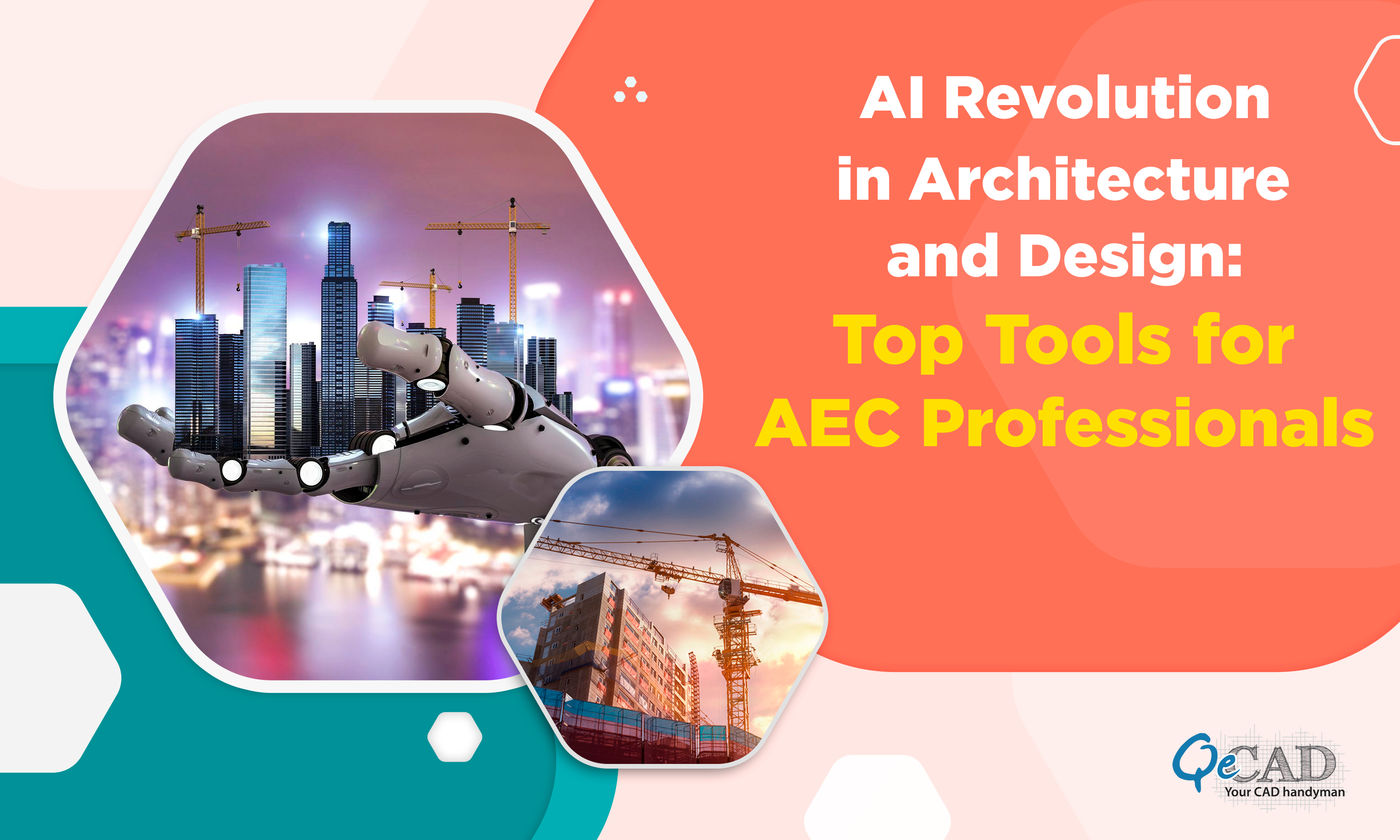
The evolution of artificial intelligence (AI) tools has significantly impacted the world of architecture and design. These innovative technologies have revolutionized how architects and designers approach their projects, streamlining workflows, enhancing creativity, and creating awe-inspiring structures. In this blog, we will get into some of the best AI tools for architects and designers, showcasing how these tools have transformed the creative process with real-life examples.
1) Generative Design Software
Example: Autodesk’s Generative Design
Autodesk’s Generative Design is a prime example of an AI-powered tool that empowers architects and designers to explore countless design possibilities. By inputting parameters and constraints, the software employs AI algorithms to generate multiple design options automatically. Architects can then evaluate these options to identify the most efficient and innovative project solutions.
2) AI-Driven Rendering
Example: NVIDIA Iray
NVIDIA Iray is a popular AI-driven rendering tool that leverages deep learning algorithms to reduce rendering times while maintaining high-quality results significantly. This tool provides architects and designers with photorealistic visualizations, making presenting their concepts to clients and stakeholders easier. With improved rendering times, designers can iterate and enhance their designs with greater efficiency.
3) Building Information Modelling
Example: Autodesk’s BIM 360
One of the best AI tools for BIM Services is Autodesk’s BIM 360 platform. BIM 360 is a cloud-based construction management software that integrates AI and machine learning capabilities to enhance collaboration, streamline workflows, and improve project efficiency throughout the construction lifecycle. Key features include intelligent project insights, automated document management, quality control, clash detection, safety analysis, layout optimizations, and real-time collaboration.
4) CAD Drafting
Example: AutoCAD
One of the best AI tools for CAD Drafting Services is AutoCAD, with its AI-driven features and capabilities. Autodesk’s widely-used computer-aided design (CAD) software, AutoCAD, has integrated AI to elevate drafting efficiency and productivity. The AI-powered features in AutoCAD are designed to assist designers and drafters in various aspects of the drafting process, making it a powerful tool for CAD services. The AI capabilities in AutoCAD help drafters save time, improve accuracy, and streamline various aspects of the drafting process, ultimately leading to more efficient and high-quality CAD drawings.
5) Virtual Reality (VR) and Augmented Reality (AR) Applications
Example: IrisVR Prospect
IrisVR Prospect is an AI-powered VR application that enables architects and designers to showcase their designs in immersive virtual environments. Clients and stakeholders can experience and navigate the proposed spaces, understanding the project’s potential more deeply. AI algorithms enhance the experience by optimizing textures and lighting conditions, creating a more realistic and engaging presentation.
6) Space Planning and Optimization
Example: Space Syntax
Space Syntax is an AI tool for space planning and optimization in architecture and urban design. It analyzes spatial data, user behavior, and functional requirements to create efficient and well-organized floor plans. This tool can also simulate pedestrian traffic flow and formulate the impact of different design choices, ensuring the final design is aesthetically pleasing and practical.
7) Natural Language Processing (NLP) for Design Briefs
Example: Sketchup’s Sefaira
Sketchup’s Sefaira is an AI-powered NLP tool that processes and analyzes design briefs to extract essential information and insights. By understanding client requirements and preferences better, architects and designers can create more personalized and targeted designs that effectively meet their client’s needs.
8) Material Selection and Sustainability Analysis
Example: Tally by KieranTimberlake
A tally by Kieran Timberlake is an AI tool that assists architects in selecting suitable materials for their projects while considering sustainability factors. The tool analyzes material data, costs, environmental impact, and availability, helping designers make decisions that align with aesthetic and sustainability goals.
9) Image Recognition and Object Detection
Example: Architizer’s Image Recognition Tool
Architizer’s AI-powered image recognition tool allows architects and designers to browse through vast collections of images for inspiration. By identifying specific design elements or architectural styles in existing structures, this tool aids designers in finding relevant references for their projects.
10) Parametric Design Tools
Example: Grasshopper for Rhino
Grasshopper for Rhino is a popular AI-powered parametric design tool that enables architects and designers to create complex and interconnected design elements. By changing one parameter, the entire design can adapt, allowing for quick experimentation and the generation of innovative solutions.
Conclusion
AI tools have undoubtedly transformed the architectural and design industries, revolutionizing how professionals approach their projects. Architects and designers can access powerful technologies that enhance their creativity and efficiency, from generative design software like Autodesk’s Generative Design to AI-driven rendering tools like NVIDIA Iray. Virtual reality applications such as IrisVR Prospect allow for immersive presentations, while AI-powered NLP tools like Sketchup’s Sefaira aid in understanding client requirements better. Moreover, sustainability analysis tools like Tally by Kieran Timberlake ensure that architects make informed decisions for environmentally friendly designs. It is AI-driven insights and automated capabilities in BIM 360 provide architects, designers, engineers, and construction professionals with a competitive edge in delivering successful projects.
As AI technology advances, architects and designers have boundless possibilities before them. Embracing these AI tools will undoubtedly empower professionals to create more innovative, sustainable, and user-centric designs in the future, further shaping the landscape of architecture and design.
